4 legendary bass synths: find out how they work and get their sound
Get the lowdown and the low-end on some of history's most iconic bass synths
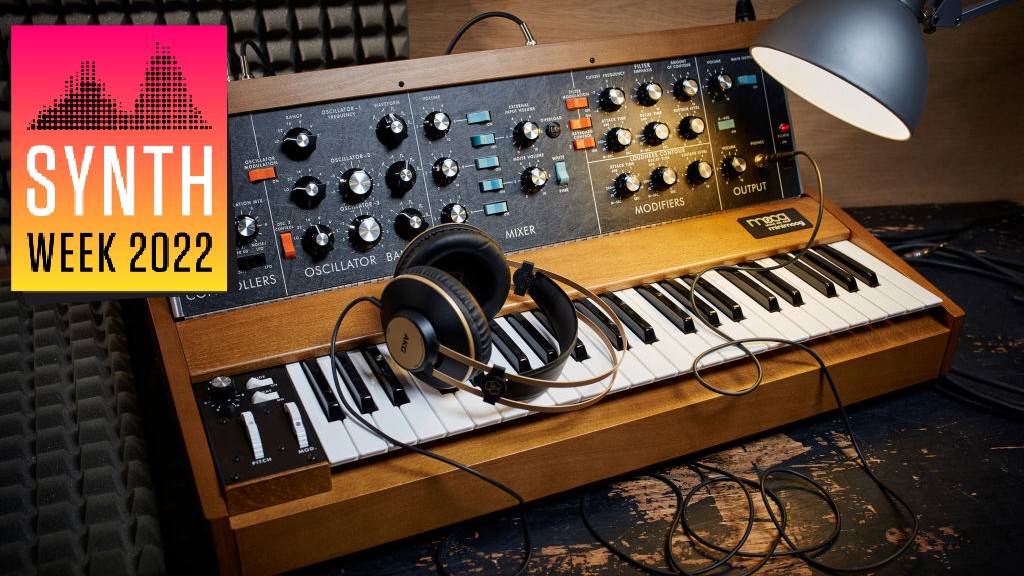
SYNTH WEEK 2022: Of course, it's all very well and good equipping yourself with a bass guitar and amp to provide the bottom end of your music but there are times when plucked strings and antiquated electricity just won't cut it. For a real bottom end you need the extra low power that only a synth can deliver.
Synth bass comes in many forms from the simple, window-shaking raw energy of a pure sine wave to colourful subtractive square wave to the block-like thud of FM synthesis and more. But what's the optimum bass source to go for to round out your bottom end to perfection?
Here we reveal four of the most revered bass-orientated hardware synths of all time, explain what they do best, and tell you what software you need to emulate their power. Let's do it.
1. Moog Minimoog
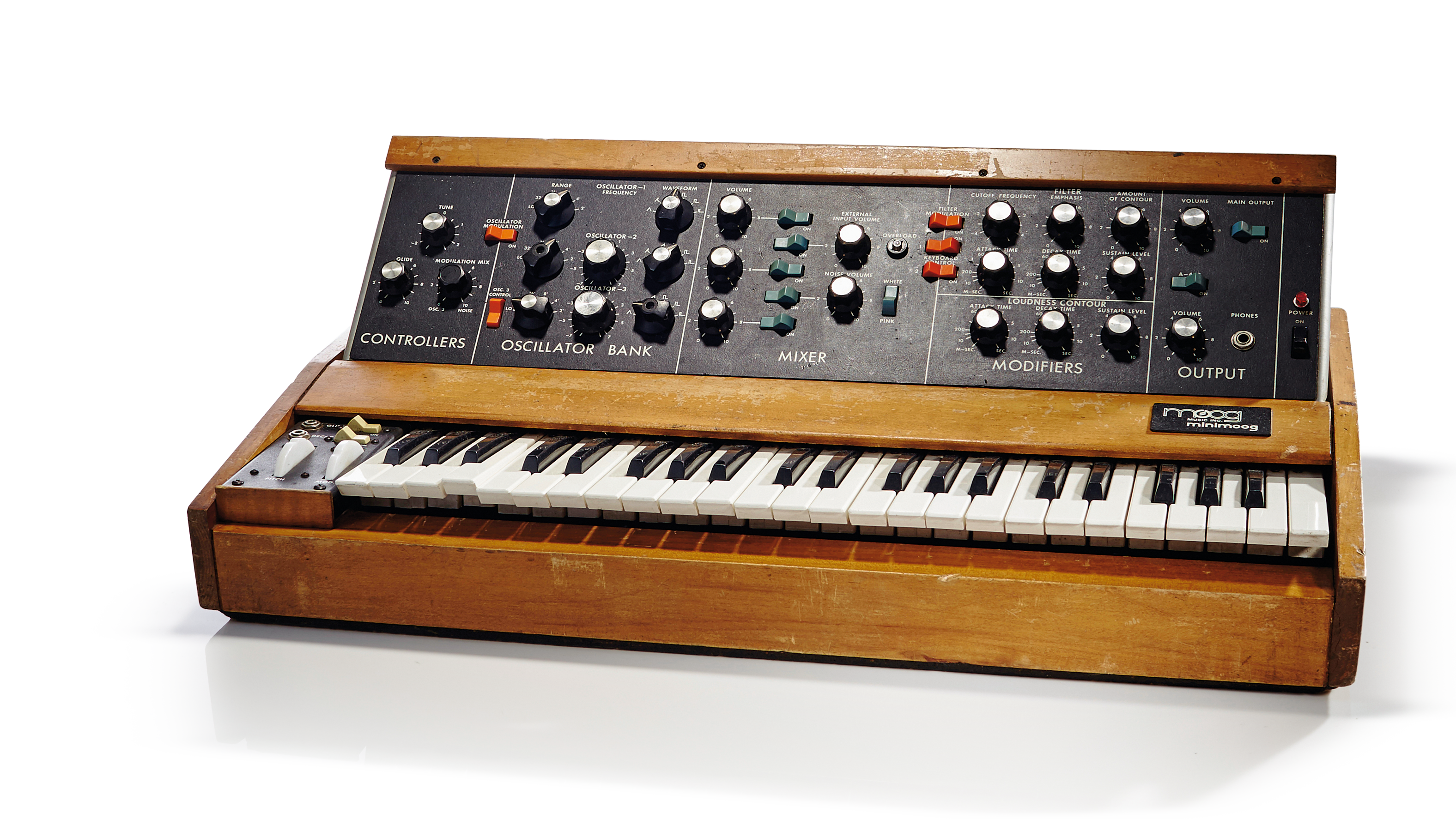
Who used it?
Gary Wright drew heavily on the Minimoog’s bottom end for his classic The Dream Weaver LP - including the familiar title cut.
The late, great Bernie Worrell used three Minimoogs to fashion the iconic bass riff that opens Parliament’s 1978 hit Flashlight. Similarly, David Frank of The System lashed a pair of them to an Oberheim DSX sequencer for the bassline for Phil Collins’ Sussudio in 1985.
Moog’s dedicated bass synth, the Taurus (see below), was much loved by progressive players, including Geddy Lee of Rush and Mike Rutherford of Genesis, to name but two.
How does it work?
The Minimoog was the anvil upon which modern synth design was forged, though few that followed have ever matched the raw power of the original, particularly in the crucial bass registers.
Get the MusicRadar Newsletter
Want all the hottest music and gear news, reviews, deals, features and more, direct to your inbox? Sign up here.

Moog built the perfect storm in the Mini, with its three (slightly unstable) oscillators, legendary 24dB/octave transistor ladder filter and, crucially, the ability to route the headphone output back through the filter section for added drive. Add to that two simple yet punchy envelope generators, and expressive left-hand controllers, and you have a recipe for some high-calorie, meaty sounds.
Though designed as a simplified all-rounder capable of leads and effects, musicians the world over have gravitated toward the Minimoog as a source of bass sounds. Moog recognised the attraction and eventually designed a dedicated bass synth - the Taurus - with a built-in set of foot pedals.
Get the sound
The Minimoog is among the most imitated synths in the world, with new knock-offs appearing even today. Needless to say, then, it’s been widely cloned in virtual form, most notably in Arturia’s Mini V, Native Instruments’ Monark and Synapse Audio’s The Legend, all of which have been around for yonks and come as close to the sound of the original Minimoog as one vintage unit might come to another!
There's even an official Moog version available for iOS devices.
If you’re on a tight budget, an online search reveals many free variants, the most (in)famous of which is likely to be Steinberg’s Model-E, one of the very first commercial VST instrument plugins.
2. Roland SH-101
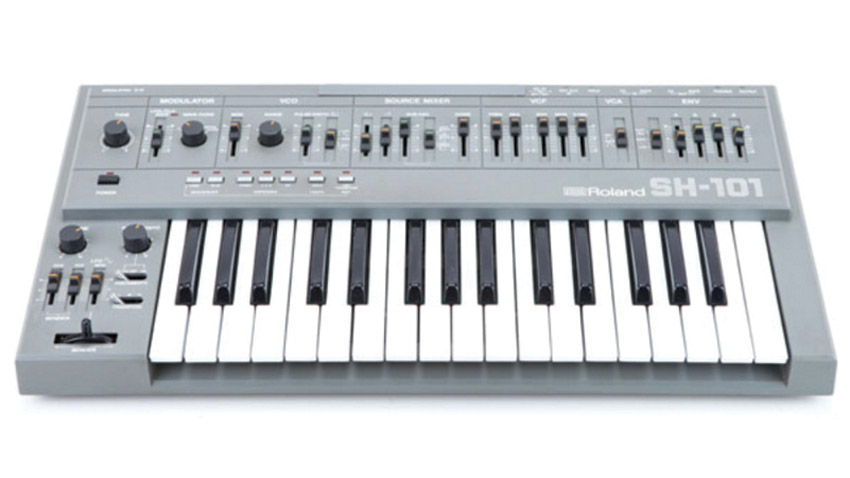
Who used it?
Released when costly digital workstations were the preferred tool of the day among the big names, the SH-101 didn’t make a big impression on the charts the first time round. It would be secondhand users such as 808 State, whose trio of 101s provided lead lines and bass sequences during the sessions for New Build. Other notable users include The Prodigy, A Guy Called Gerald and, more recently, Xeno and Oaklander.
How does it work?
The SH-101 was Roland’s last classic monosynth, coming to market when polyphony and programmability were all the rage. With a price of £249, this garish, guitar-handled instrument was priced to sell, and sell it did, with a whopping 50,000 units hitting the streets during a production run that spanned from 1982 to 1984.
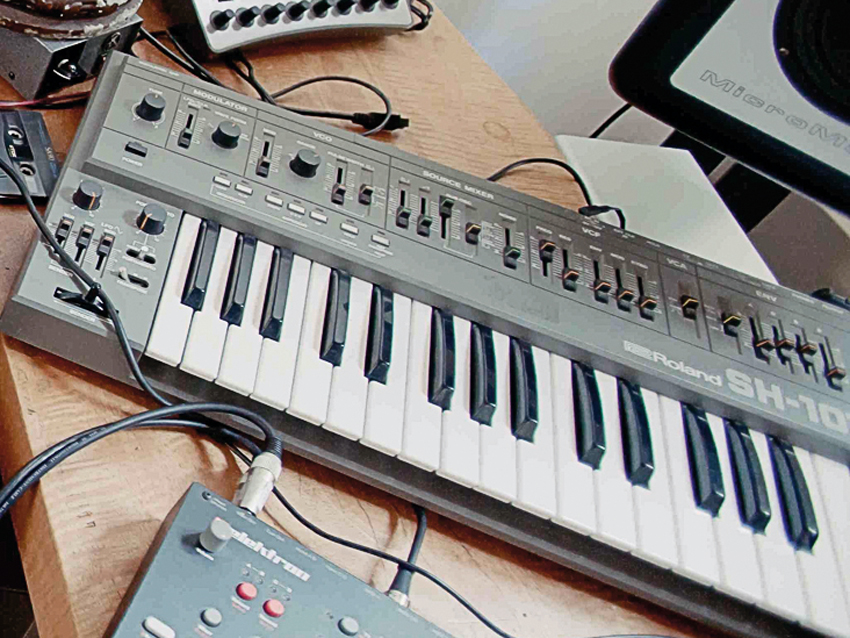
A surprising hit at a time when digital synths were ‘the next big thing’, the SH-101 packed a ton of power beneath a plastic case that came in a choice of red, grey, or blue. One would have expected a flimsy sound from this single-oscillator synth, yet the SH-101 sounded thick, full and punchy thanks to the inclusion of a sub oscillator. Additionally, though it produced only saw, pulse and noise waveforms, they - along with the aforementioned sub oscillator - were accessed not by a switch, but by a mixer panel that allowed any and all to be mixed into a single, complex waveform.
This composite waveform was plumbed through a squelchy, self-oscillating 24dB resonant filter that could be modulated by a single LFO, the lone ADSR, and the keyboard.
The intuitive built-in sequencer was a gem, allowing users to step-enter notes to be played back at the LFO’s clock rate. Sequences could be transposed from the instrument’s keyboard. Cool.
Great for leads and not bad at sound FX, the SH-101 is most famous as a source for solid bass sounds and engaging sequenced passages.
Get the sound
Today’s would-be 101 user can go directly to the source. Roland themselves offer their software recreation of the SH-101 as part of the Roland Cloud subscription service. There’s also D16 Group’s LuSH-101, Togu Audio Line’s TAL-Bassline-101, or their free version, TAL-Bassline.
3. Sequential Circuits Pro One
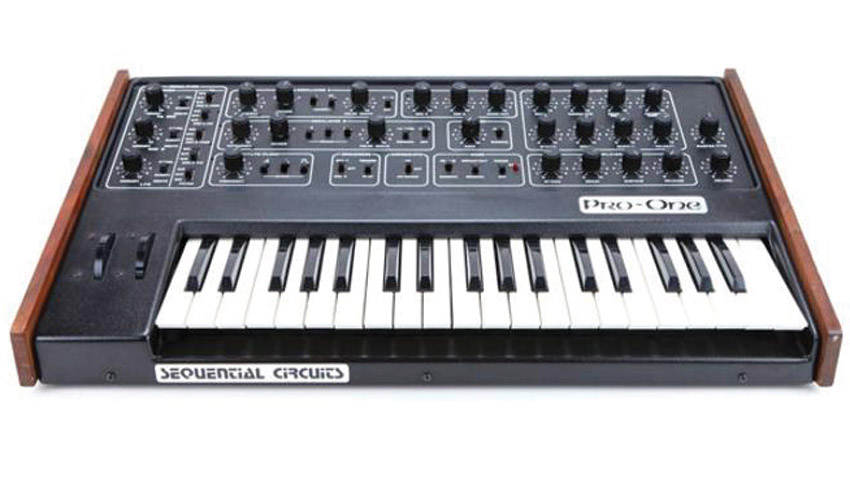
Who used it?
Vince Clarke was the most famous proponent of the Pro One, jumping ship from Depeche Mode in the same year that the synth was released. As it happens, this is also the synth upon which he built his next band’s first hit - the blockbuster ballad Only You by Yazoo. Virtually every sound in Only You - including the bass and kick drum - was made using the Pro One.
Chromeo’s Hot Mess and Don’t Turn the Lights On both use the Pro One for bass sounds. The Pro One was the main synth on Skinny Puppy’s Remission EP. It’s also been used by Hardfloor, Überzone, Mouse On Mars and The Prodigy.
How does it work?
Sequential Circuits made their mark with the programmable, polyphonic Prophet-5, first released in 1978. That costly classic came in at a whopping £2845, but that didn’t slow sales in the least. Those wishing for an entry level option would wait a full three years for the monophonic Pro One, which packed a single voice worth of Prophet into a 37-key package.
As with its bigger brother, the Pro One offered dual oscillators and a 24dB resonant lowpass filter. This last bit was based on the much-loved Curtis filter chip, as found in later revisions of the P-5. The oscillators themselves sounded expansive and expensive, with deep lows and clear, cutting highs.
More impressive were the modulation options, providing loads of potential sources and destinations. Both VCA and filter were provided with full ADSR envelope generators - perfect for crafting bass patches.
Those bass patches could then be driven with the onboard sequencer, into which the proud owner could step-enter up to 40 notes. An arpeggiator provided additional sequential duties.
Get the sound
The Pro One is one of the few vintage instruments to be directly cloned by analogue alchemists u-he, whose Repro-1 is a note-for-note copy with an astonishingly authentic sound. If you can’t swing the $99, you can get a taste from its free RePro-Alpha, a cutdown proof-of-concept that preceded the commercial version. Spectrasonics Trilian, meanwhile, features plenty of sampled Pro One waveforms.
4. Roland TB-303
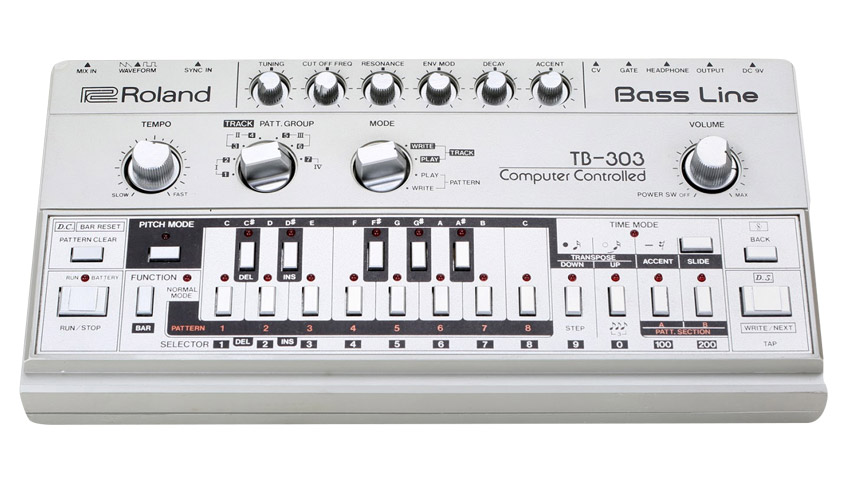
Who used it?
The 303’s throaty squelch can be heard on tracks ranging from Orange Juice’s 1983 top-ten hit Rip It Up through Phuture’s late 80s Acid Tracks to Hardfloor’s Acperience in 1992. This de facto acid house sound has since become instantly recognisable.
How does it work?
The Minimoog’s position as the reigning king of bass was once seen as unassailable. How surprising it must have been, then, that it was kicked from its perch by an inexpensive lump of silver plastic with a limited sonic palette. And yet, Roland’s diminutive TB-303 did exactly that, kicking off entire genres of music and becoming the standard for generations of producers in the process.
A commercial failure at the time of its release in 1981, the TB-303 was blown out on the cheap when it was discontinued. It would be secondhand users that propelled the 303 into legendary status.
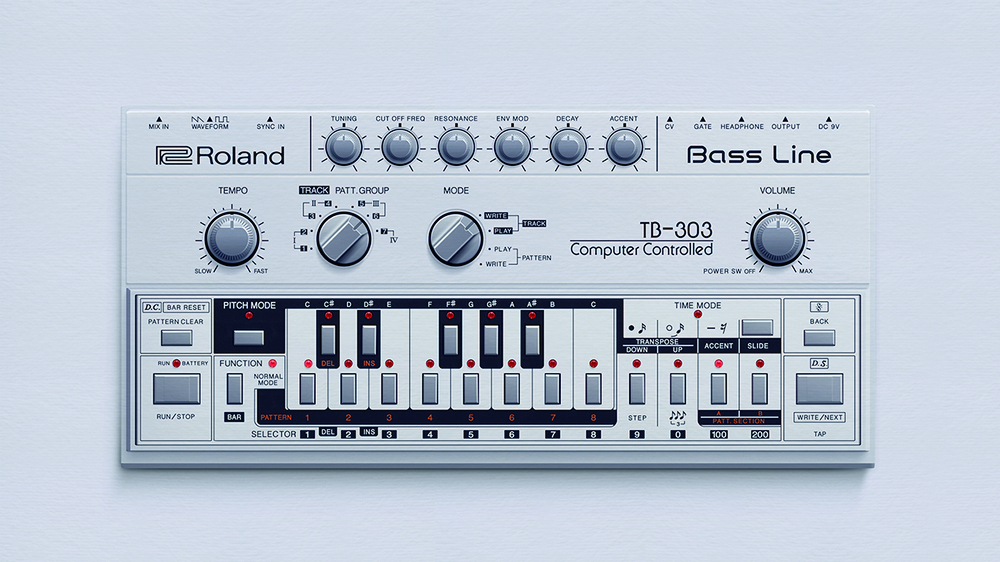
Roland TB-303 vs. software emulations: can you tell the difference?
A joyously simple instrument, the 303’s lone oscillator could produce either a square or sawtooth wave (but not both at once) to be spat through a wildly squelchy 24dB low-pass filter (not a three-pole, 18dB job as so often claimed). Control over the single envelope generator was limited to Decay time and filter mod amount. An Accent parameter was also provided.
Simple, to-the-point, and nearly impossible to screw up, the sound of the TB-303 ranges from smooth and rounded to raw and gritty. Equally simple, the unit’s sequencer - if not exactly intuitive - was at least an interesting source of random patterns, its key feature being a characteristic portamento (or ‘slide’).
Get the sound
The simplicity of the TB-303 made it an obvious target for software developers, and its most famous emulation was Propellerhead’s seminal ReBirth, released in 1998. A killer clone of the 303 and the equally-revered TR-808 and TR-909 drum machines, it proved once and for all that entire tunes could be made in a computer.
ReBirth has been discontinued, but modern users can buy AudioRealism’s BassLine 3, D16 Group’s Phoscyon, Audio Blast’s Acid Box, or, if you’re short on cash, the free and open-source Freebirth.


Computer Music magazine is the world’s best selling publication dedicated solely to making great music with your Mac or PC computer. Each issue it brings its lucky readers the best in cutting-edge tutorials, need-to-know, expert software reviews and even all the tools you actually need to make great music today, courtesy of our legendary CM Plugin Suite.




![PRS Archon Classic and Mark Tremonti MT 15 v2: the newly redesigned tube amps offer a host of new features and tones, with the Alter Bridge guitarist's new lunchbox head [right] featuring the Overdrive channel from his MT 100 head, and there's a half-power switch, too.](https://cdn.mos.cms.futurecdn.net/FD37q5pRLCQDhCpT8y94Zi.jpg)





